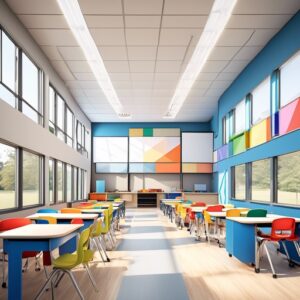In the ever-evolving landscape of education, the demand for flexible, cost-effective, and sustainable solutions has led to the rise of modular classroom buildings. These innovative structures, built off-site in factory settings and then transported to their final locations for assembly, have become increasingly popular among educational institutions worldwide. This article delves into the reasons behind this trend, the benefits of modular classrooms, and their potential impact on the future of education.
The Need for Flexibility and Scalability
Educational institutions often face fluctuating student populations due to demographic shifts, changing enrollment patterns, or temporary space constraints. Traditional construction methods, with their lengthy timelines and fixed designs, struggle to adapt to these dynamic needs. Modular classroom buildings offer a solution by providing flexibility and scalability. Schools can quickly add or remove modules as required, accommodating changing enrollment numbers or repurposing spaces for different educational purposes. This adaptability ensures that educational facilities can efficiently utilize their resources without compromising on quality or functionality.
Speed and Efficiency
One of the most significant advantages of modular construction is its speed and efficiency. Unlike traditional building methods that involve on-site construction and weather dependencies, modular classrooms are manufactured in controlled factory environments. This controlled setting allows for simultaneous work on multiple modules, significantly reducing construction time. Once completed, the modules are transported to the site and assembled within a fraction of the time required for traditional construction. This accelerated process enables schools to meet urgent space needs, such as accommodating a sudden influx of students or addressing emergency situations, without causing disruptions to ongoing educational activities.
Cost-Effectiveness
Modular classroom buildings offer cost-effective solutions compared to conventional construction methods. The streamlined manufacturing process, reduced construction time, and standardized designs contribute to lower overall project costs. Additionally, the ability to repurpose or relocate modular units provides long-term cost savings by minimizing the need for future construction projects. Schools can allocate their budgets more efficiently, investing in other essential educational resources or programs. Furthermore, modular construction’s sustainability features, such as reduced material waste and energy efficiency, align with schools’ efforts to adopt environmentally responsible practices while saving on operational expenses.
Customization and Design Innovation
Contrary to the misconception that modular buildings are limited in design options, modern modular construction offers extensive customization possibilities. Schools can collaborate with modular building manufacturers to tailor designs to their specific needs, incorporating features such as specialized classrooms, laboratories, or collaborative spaces. Advanced building technologies and materials allow for innovative designs that promote creativity, comfort, and functionality. From eco-friendly features like green roofs and solar panels to adaptable layouts that support diverse learning activities, modular classrooms can be customized to enhance the educational experience and create inspiring environments for students and educators alike.
Sustainability and Environmental Benefits
In an era increasingly concerned with environmental sustainability, modular construction stands out as a greener alternative to traditional building methods. The controlled factory environment minimizes material waste, as manufacturers optimize material usage and recycling practices. Moreover, modular buildings often incorporate sustainable materials and energy-efficient systems, reducing their environmental footprint throughout their lifecycle. Additionally, modular construction’s off-site fabrication results in fewer disruptions to the surrounding environment, such as noise pollution and habitat disturbance, compared to traditional construction sites. By choosing modular classroom buildings, educational institutions can demonstrate their commitment to environmental stewardship while providing students with healthier, more sustainable learning environments.
Conclusion
The rise of modular classroom buildings reflects a paradigm shift in the way educational spaces are designed, constructed, and utilized. These innovative structures offer a myriad of benefits, including flexibility, speed, cost-effectiveness, customization, and sustainability. As educational institutions continue to face evolving challenges and opportunities, modular construction provides a versatile solution that aligns with their needs and values. By embracing modular classroom buildings, schools can not only address immediate space requirements but also foster environments that inspire learning, collaboration, and innovation. As we look to the future of education, modular construction is poised to play an increasingly significant role in shaping the learning spaces of tomorrow.


